16 Best Wellness Destinations in India to Relax & Recharge
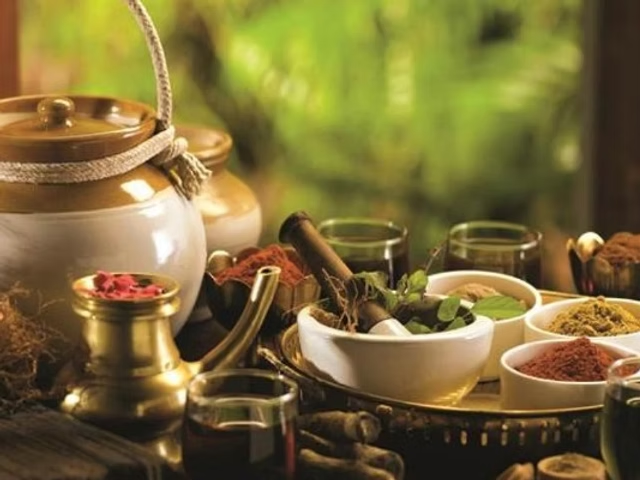
Sometimes a regular vacation isn’t enough in our busy, fast-paced lives. We often need more than just a break; we need a chance to really heal our body, mind, and spirit. A wellness vacation is the best way to do this. It’s a unique kind of trip that focuses on making you healthier, less stressed, and teaching you healthy habits that you can use in your everyday life. These quiet getaways give you a chance to focus on yourself without having to deal with work calls or daily tasks. India is one of the best places in the world to go on a wellness journey because it has old traditions like Ayurveda, yoga, and meditation. There are great places all over India that can help you feel like a new person, from the lush green hills of Kerala to the calm mountains of the Himalayas. Here is our list of the best wellness destinations in India if you’re ready to give yourself a truly healing experience. Ayurveda’s Heart: Kerala’s Wellness Retreats Ayurveda originated in Kerala, and the calm backwaters and lush landscape make it a great place to heal. 1. Kalari Kovilakom A picture from Kerala ayurvedic website. This is not a normal resort; it’s a retreat in a 200-year-old palace that looks like a hospital. It provides very real and serious Ayurvedic treatments. Guests can’t eat meat, drink alcohol, or even wear leather shoes on the property to get the most out of their stay. What makes it unique: It is known as the “palace of Ayurveda” and offers a very traditional experience. Focuses on long-term, serious treatments for certain health problems. The environment is very strict and disciplined, which helps with deep healing. Pro Tip: This retreat is best for people who really want to make a big change in their health, not for a vacation to relax. 2. The Leela in Kovalam A picture from Leela’s ayurvedic website. This luxury resort is on a cliff with a view of the beautiful Kovalam beach. It offers five-star comfort and real wellness programs. The staff is well-trained and makes packages that are unique to each guest. What Makes It Unique: It is one of the best high-end wellness retreats in the area. It is well-known for its weight loss programs that work. You can focus on your health while taking in beautiful views of the ocean. Pro Tip: To make your stay even more special and relaxing, book a room with a view of the sea. 3. The Ayurvedic Center in Sarovaram A picture from the Kerala tourism website. Sarovaram is a family-run center on the quiet banks of Ashtamudi Lake. It has a warm and welcoming atmosphere. It’s a great place for families or groups who want to get healthy together. What Makes It Unique: It has special retreat packages for families and groups. The area by the backwaters is very quiet and full of nature. Offers a wellness experience that is more personal and less formal. Pro Tip: After your treatments, take a relaxing boat ride in the evening to make the most of the backwater location. 4. The Kumarakom Lake Resort A picture from the Karakonam website. This luxury resort on the banks of Lake Vembanad is well-known for making Ayurveda a part of a high-end lifestyle. People know the center for its beautiful, traditional Keralan architecture and knowledgeable staff. What Makes It Unique: It has won a lot of awards for its great services and beautiful property. Offers a lot of oil massages that help you detox and relax. You can also buy their cold-pressed oils of high quality to take home. Pro Tip: For a truly unique and relaxing experience, try their traditional “Abhyanga,” which is a four-handed massage. Wellness Centers in and around Bangalore: Urban Sanctuaries You don’t always have to go far to find peace. These places near Bangalore are a quick getaway from the city. 5. The Ayurvedagram Heritage Wellness Center A picture from the Ayurbethaniya website. Ayurvedagram is just outside of Bangalore and makes you feel like you’ve gone back in time to Kerala in the 17th century. The whole resort is made up of restored wooden cottages from Kerala, which gives it a very real and peaceful feel. What Makes It Special: The beautiful and real heritage cottages. It uses traditional healing methods for everything, from food to building. Offers packages that boost immunity and online yoga classes. Pro Tip: Even if you can’t stay overnight, you might want to book a day package to experience the unique atmosphere and eat a traditional Ayurvedic meal. 6. Shreyas Yoga Getaway A picture from the Thrillophia website. Shreyas is a private and high-end yoga retreat close to Bangalore. It has a small number of guests, which means that the trainers can give each person a lot of attention. It’s great for people who want to improve their yoga in a cozy setting. What Makes It Unique: Concentrates on real yoga, from beginner to expert levels. Has a private pool, a home theater, and beautiful gardens, among other luxury amenities. Provides one-of-a-kind activities like community-style dining and organic farming. Pro Tip: This is not a normal resort, so keep that in mind. To get the most out of your stay, be ready to stick to a strict schedule of yoga, meditation, and healthy eating. 7. Ayurvedic Center in the Indus Valley, Mysore A picture from the ayurvedic center’s website. This center in Mysore is based on the five elements (earth, water, air, fire, and ether) and is a couple of hours’ drive from Bangalore. It teaches you how to balance these parts of your body to stay healthy. What Makes It Special: It is based on deep, traditional Ayurvedic ideas. It teaches you real-life changes you can make that will help you even after you leave. In the peaceful and culturally rich city of Mysore. Pro Tip: The center has programs that last anywhere from one week to a month. If
13 Best Instagram-Worthy Travel Spots in India (The Tarzan Way)
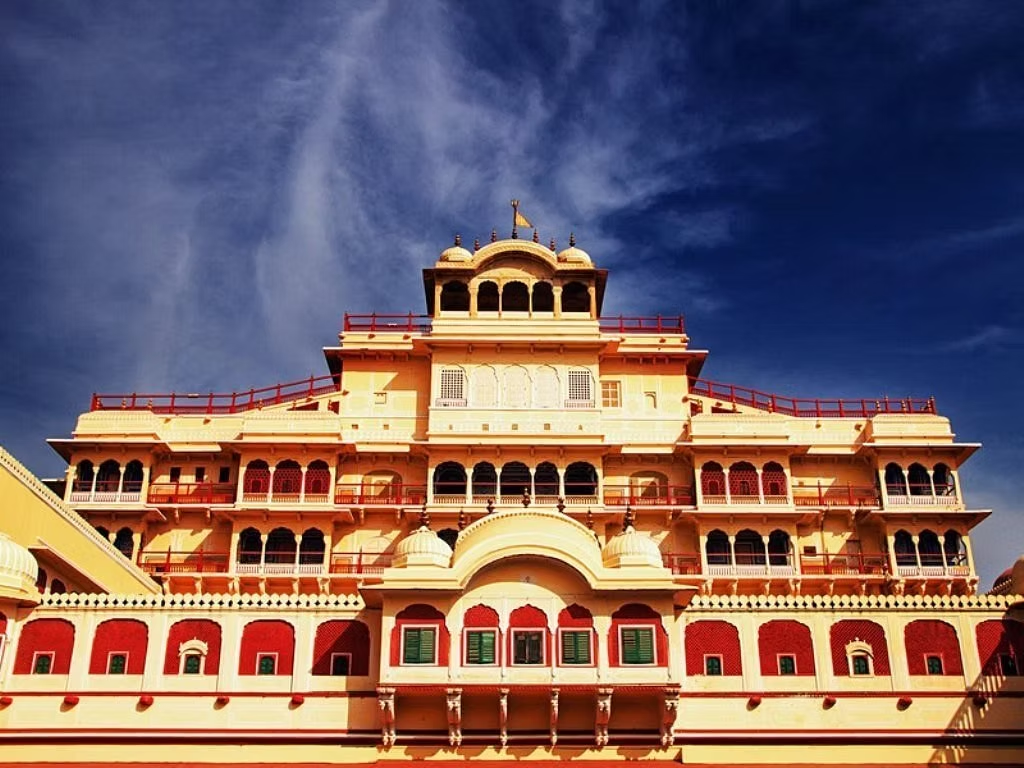
A picture can tell a story and be shared with the whole world in a matter of seconds on social media. For travelers, this means finding those beautiful places that not only take your breath away but also make for the best pictures. India is a photographer’s and traveler’s dream because of its amazing variety of landscapes, colors, and cultures. There are so many beautiful places just waiting to be photographed, from snowy mountains and huge deserts to old ruins and colorful cities. But where do you even start with all of these choices? We’ve made a list of the best places in India to take pictures for your next vacation. This isn’t just a list of nice places; it’s your guide to getting the perfect shot that will make your followers want to go. Let’s get started! 1. The City Palace in Jaipur: The Royal Doors Image by Trip Advisor There are many great places to take pictures at the City Palace in Jaipur, but the four beautiful gates in the inner courtyard are the most famous. Each gate has a different season on it and is covered in bright colors and very detailed patterns. The Money Shot: A picture of a person in front of the green Leheriya Gate, which stands for spring. A beautiful picture that shows off the Peacock Gate’s many small details (which stand for fall). Pro Tip: This place is very popular, so you might have to wait in a short line to get a good picture of each door. Wait; it’s worth it to get a picture without other people in it! 2. Chamba Camp, Thiksey (Ladakh): A luxurious place to stay in the mountains Image by Trip Advisor The Chamba Camp in Thiksey is the best place to go for “glamping” (glamorous camping) with a view that looks like it came straight out of a magazine. The beautiful Thiksey Monastery and the Himalayan mountains are behind these luxury tents. The Money Shot: A picture of your fancy tent with the beautiful Thiksey Monastery in the background. A picture of the beautiful mountains taken from your own outdoor seating area. Pro Tip: This is a seasonal camp, so it’s usually open from May to October. Make your reservations well in advance because it’s a very popular and exclusive event. 3. The Backwaters in Alleppey, Kerala Image by Pick Your Trail The calm backwaters of Alleppey, which is also known as the “Venice of the East,” are very well-known. You have to take a ride on a traditional houseboat to see palm trees, small villages, and beautiful green scenery. The Money Shot: A picture of a houseboat moving through calm waters from the deck. A picture of a local fisherman in his small canoe with a beautiful sunset behind him. Pro Tip: Stay on a houseboat for the night. The views at sunrise and sunset are the most beautiful and give the best light for pictures. 4. The Tea Gardens in Munnar, Kerala Image by Holidify There are endless rolling hills of perfectly manicured tea plantations all over the hill station of Munnar. The tea bushes’ straight lines against the misty mountains make for a beautiful and calm scene. The Money Shot: A wide shot of the green tea valleys that shows how big they are. A picture of you or your friends walking along the narrow paths between the tea plants. Pro Tip: A lot of tea gardens have set places for taking pictures. To get a more unique picture, ask your driver to take you to a viewpoint that isn’t as busy. 5. Valley of Flowers in Uttarakhand: A Colorful Carpet Image by Veena World This place looks like it came straight out of a storybook. During the monsoon season, the Valley of Flowers National Park is full of hundreds of different kinds of colorful flowers. The Money Shot: A wide shot of the valley that shows how many different kinds of flowers there are and how thick they are. A close-up of a rare and lovely flower, like the hard-to-find Blue Poppy. Pro Tip: The valley is only open from June to October, so keep that in mind. The best time to see the flowers in full bloom is from mid-July to mid-August. 6. The White Desert in Gujarat’s Rann of Kutch Image by Country Holidays Inn and Suites The Rann of Kutch is the biggest salt desert in the world. In the winter, it becomes a huge, strange landscape of white salt crystals that goes on forever. The Money Shot: A picture taken at sunset, when the pink and orange colors of the sky are reflected in the white sand. A creative shot that plays with perspective because the flat, empty landscape makes for fun photo tricks. Pro Tip: Go during the Rann Utsav festival, which happens from November to February most years. The bright cultural events and fancy tents make for great photo opportunities. 7. Dal Lake in Kashmir: Heaven on Earth Image by Wion Dal Lake in Srinagar is like a painting come to life. The calm blue water perfectly reflects the huge Himalayan mountains. The colorful shikaras (traditional boats) make it even more beautiful. The Money Shot: A picture taken while riding a shikara with the beautiful mountains in the background. A colorful picture of the flower and vegetable market that floats in the early morning. Pro Tip: Go in late July or August to see the lake’s famous lotus flowers in full bloom. This will make your photos even more beautiful. 8. The Blue City: Jodhpur, Rajasthan Image by Trip Savvy The old city of Jodhpur is known for the thousands of houses that are painted a beautiful shade of blue. The best place to see this is from the top of the huge Mehrangarh Fort, which has a stunning view of the blue sea of houses below. The Money Shot: A wide-angle picture of the blue houses from the top of Mehrangarh Fort. A
The 12 Best Places Near Bangalore for a Great Work Outing

Taking a break from the busy streets and traffic of Bangalore for a day or two is the best way to relax and recharge. An outing is more than just a break for corporate teams. It’s a chance to reconnect, strengthen bonds, and have fun together without the stress of meetings and deadlines. It brings back memories of fun times in college for everyone and makes the workplace a better place to be. But it can be hard to plan the perfect trip. You need a place to go that is easy to get to, fits your budget, and has things to do that everyone on the team will enjoy. The areas around Bangalore have a lot of great options for both short and long trips. You can go on a quick adventure for a day or a relaxing weekend getaway. We made a list of the best places near Bangalore for corporate outings to help you plan the perfect trip for your team. To help you decide, this guide is split into short one-day trips and longer weekend getaways. Quick One-Day Business Trips from Bangalore These places are great for a short, active trip that can be done in one day: A picture from the travel+lesuire website. 1. Nandi Hills: For a trek at sunrise Nandi Hills is the most popular place for Bangaloreans to spend the weekend, and for good reason. The main draw is the breathtaking view of the sunrise from the top, which is a magical experience to share with your team. Taking a walk to the top early in the morning is a great way to start the day. Perfect for teams that like to hike in the early morning, see beautiful sunrises, and take pictures. 60 km away from Bangalore Pro Tip: To see the sunrise, your team needs to leave Bangalore by 4:00 AM at the latest. At 6:00 AM, the gates at the bottom of the hill open, and there is usually a queue of cars. A picture from the south tourism website. 2. Muttathi: To See Nature and Animals Muttathi is a quiet place on the banks of the River Kaveri, surrounded by a thick forest. Because it is in the Cauvery Wildlife Sanctuary, it is a great place for teams that like nature, birdwatching, and seeing some wildlife. Great for teams that like nature, wildlife photography, and quiet places. 100 km away from Bangalore Pro Tip: You can’t get into the river because the currents are too strong, but a coracle boat ride is a fun thing to do. Only hire licensed boatmen to help you. A picture from the nativeplanet.com website 3. Anthargange: To Explore Caves Anthargange is a great place to go with your team for a unique outing. This place is known for its natural volcanic rock formations that have made a network of caves. A guided tour of these caves is an exciting adventure that needs people to work together and talk to each other. Great for teams that like: new experiences, light hiking, and finding out about strange places. 70 km away from Bangalore Pro Tip: The part where you explore the cave can be hard. You should definitely hire a local guide who knows the safest ways to get through the caves. A pic from the Unsplash website. 4. Rangaswamy Bilikal Betta: For a Group Hike with Beautiful Views The walk up this hill, which is also called “White Rocks,” is moderate and good for most fitness levels. The path goes through a forest and has great views at the top. If your team wants to enjoy nature without having to climb too much, this is a great choice. Great for teams that like walking in nature, moderate hiking, and beautiful views. 75 km from Bangalore Pro Tip: At the top, there is a temple for Lord Ranganatha Swamy under a huge white rock. It’s a nice place to relax after the hike. A pic from the travel. earth website. 5. Shivanasamudra Falls: For a Beautiful View The Kaveri River breaks into two beautiful waterfalls, Gaganachukki and Bharachukki, during the monsoon season. Shivanasamudra is the name for all of them. The sound and sight of the rushing water are truly amazing and powerful. Perfect for teams that like: taking pictures of nature, driving in the rain, and driving in the rain. 130 km away from Bangalore Pro Tip: If you want to see the best waterfalls, plan your trip during the peak monsoon season (July to September). But be careful because the rocks can be slippery. A pic from the Kayak.com website. 6. Mysore: A Taste of History A well-planned day trip to Mysore is also possible, even though it can be a weekend trip. Teams can go to the beautiful Mysore Palace, check out the busy Devaraja Market, and have a great lunch at a nearby restaurant. Perfect for groups that like history, culture, and looking at royal buildings. 143 km from Bangalore Pro Tip: To save time on a day trip, focus on just one or two main attractions, like the Mysore Palace and Chamundi Hill. Don’t try to see everything. A picture from the FFO website. 7. Hogenakkal Falls: The “Niagara of India” Hogenakkal Falls is a beautiful place where the Kaveri River flows through a rocky landscape. It is on the border of Karnataka and Tamil Nadu. The coracle ride that takes you close to the powerful falls is the main draw here. Perfect for teams that like unique boating experiences and beautiful scenery. 146 km away from Bangalore Pro Tip: The best part is the coracle rides. For the whole group to avoid confusion later, talk to the boatman about the price ahead of time. A pic from the Karnataka Tourism website. 8. Sakleshpur: For Nature and Adventure That Isn’t Mainstream Sakleshpur is a hidden gem in the Western Ghats that isn’t as crowded as Coorg and Chikmagalur. It has beautiful hiking trails, like the famous Railway Track
12 Best Indian Spots for an Unforgettable Friends Trip
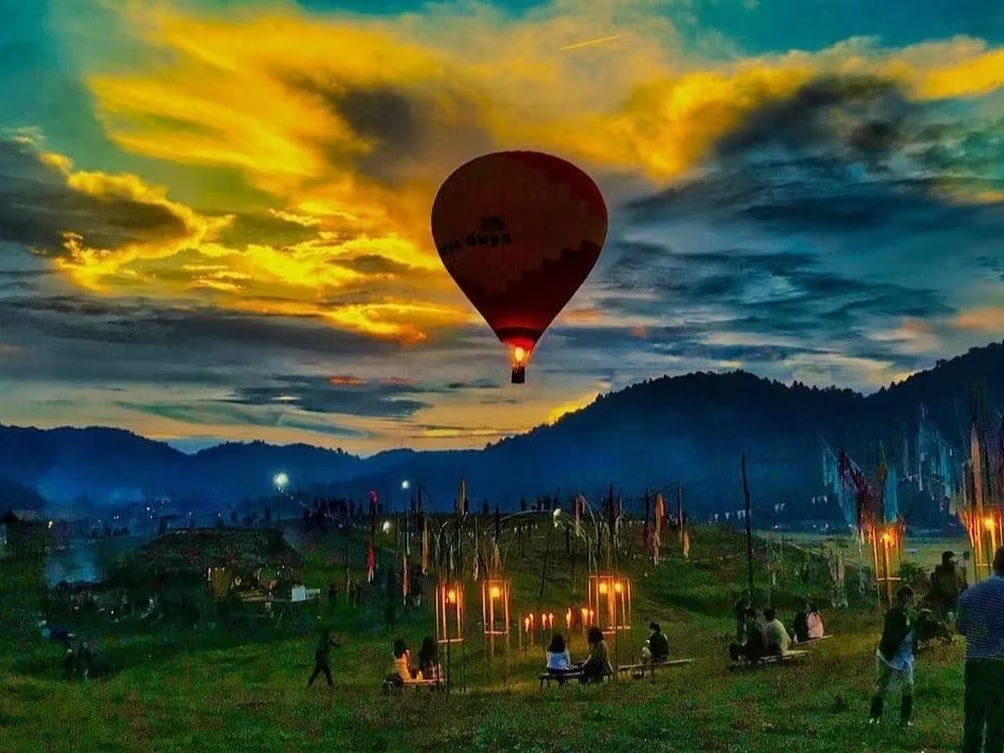
When you travel with friends, something special happens. It’s the laughter you share on a long road trip, the inside jokes you make over a simple meal, and the feeling of leaving all your worries behind to just hang out with your favourite people. Going on a trip with friends is the best way to relax, have fun, and make memories that will last a lifetime unforgettable Friends Trip. We’ve all been in a group chat where the planning starts out fun, but then the plan falls through. But what if it really happens this time? There are so many great places in India for all kinds of friend groups, whether you want to have fun, go on an adventure, or just relax. We can help you decide where to go on that epic friendcation you’ve been wanting to take. This list of the best places to travel with friends in India will help you make those plans happen. 1. Ladakh: The Best Place for an Adventure Photo Credit: Unsplash Ladakh is the perfect place for a group that loves adventure. Its beautiful landscapes include barren mountains, bright blue lakes, and dramatic high passes. The trip here is just as beautiful as the place itself, making it a great road trip. Great for friends who like: Long bike rides and road trips. Hard hikes like the well-known Chadar Trek. Camping outside with a clear, starry sky. Pro Tip: Renting bikes or one SUV for the whole group can be more fun and cost-effective. To avoid altitude sickness, which can quickly ruin a group trip, make sure everyone gets used to the high altitude in Leh for at least 48 hours. 2. Rishikesh, Uttarakhand: For Thrills and Chills Photo Credit: eUttaranchal Rishikesh is the perfect place for adventure and spirituality because it is on the banks of the holy River Ganga. During the day, you can push your limits, and at night, you can relax by the river. Great for Friends Who Like: Things that get your heart racing, like bungee jumping and white-water rafting. Camping by the river with music and bonfires. Going to the Ganga Aarti ceremony and checking out cool cafes. Pro Tip: If you’re going rafting or bungee jumping with a group, book your spots online. You can often get better deals and make sure that everyone has the same time for the activities. 3. Kasol, Himachal Pradesh: For a Relaxed Atmosphere Image Source: Ashwini Chaudhary Kasol is a small town in the Parvati Valley that is known as the “Amsterdam of India.” It has a very laid-back and chill vibe. Backpackers and nature lovers love this place because it has beautiful pine forests, a rushing river, and snow-capped mountains all around. Great for Friends Who Like: Simple hikes, like the one to Kheerganga. Hanging out in hippie cafes and eating Israeli food. Having fun together in nature. Pro Tip: While you’re in Kasol, take a short hike to the village of Chalal. There aren’t as many people there, and the Parvati River has some lovely places that are great for a group picnic. 4. Shillong, Meghalaya: For Music and Nature’s Wonders Image Source: Aenic Visuals Shillong is a beautiful hill station with a cool vibe. People call it the “Scotland of the East.” It has a great music scene, beautiful waterfalls, mysterious caves, and amazing living root bridges in nearby villages. Great for Friends Who Like: Seeing unique natural wonders like the clear rivers and living root bridges. Going to cool, unique cafes and listening to live music. Long drives through beautiful, foggy scenery. Pro Tip: If you want to see Shillong and the area around it, the best thing to do is rent a big taxi for the whole day. The drivers are usually great at giving directions and know all the best places to see. 5. Spiti Valley, Himachal Pradesh: For a High-Altitude Road Trip Image Source: Anmol Arora Spiti Valley is a cold mountain desert that has some of the most beautiful scenery in the world. This trip isn’t for the weak of heart, but it’s a great way to bond with your friends like nothing else. Great for friends who like: Driving off-road and on tough road trips. Going to old Buddhist monasteries. Taking pictures of dramatic, empty landscapes. Pro Tip: Most of Spiti has very little network connectivity. Before you leave, make sure to download maps that you can use without an internet connection and tell your family about your plans. 6. Gangtok, Sikkim: A Place to Have Fun and Learn About Culture Image Source: Bhaskar Palit Gangtok, the capital of Sikkim, is a clean, beautiful hill station that has the best of both Tibetan and Indian cultures. It is famous for its beautiful monasteries and stunning views of the Kanchenjunga mountain range. Great for Friends Who Like: Seeing beautiful monasteries and learning about Buddhism. Eating tasty Tibetan food like momos and thukpa. Travel on a budget with lots of cheap places to stay and eat. Pro Tip: If you can get permits, you should definitely take a shared jeep trip to Tsomgo Lake and Nathu La Pass. It’s a classic thing to do in Gangtok that is best done with friends. 7. Jaipur, Rajasthan: A Trip Fit for a King and Full of Colour Image Source: Dexter Fernandes Jaipur, also known as the “Pink City,” is a great place for friends who love history, culture, and taking great pictures. Jaipur is a colourful and interesting place to visit because of its grand palaces, strong forts, and busy markets. Great for friends who like: Visiting old forts and palaces. Buying colourful fabrics, jewellery, and crafts. Finding places to take pictures that look good on Instagram. Pro Tip: Instead of just going to the forts, book a group activity like a cooking class or a block-printing workshop to have a more hands-on cultural experience together. 8. Lonavala, Maharashtra: A Quick Trip Image Source: Animesh Das Lonavala is a great place for
The Complete Guide to Coorg: Discovering India’s Coffee Capital
Where Mist Meets Aromatic Plantations: An Introduction Imagine waking up on a cool, foggy morning with the strong, intoxicating smell of roasted coffee beans in the air. The soft sound of birds chirping adds to the peacefulness of the scene as rolling hills covered in many shades of green fade into a soft blanket of fog. This isn’t a dream; it’s just another morning in Coorg, which is known as the “Scotland of India.” Kodagu is the official name for this beautiful hill station in the Western Ghats of Karnataka. It is a place that soothes the soul and wakes up the spirit of adventure. Coorg is a great place for travellers who want to get away from everyday life. It has lush landscapes, waterfalls, exciting activities, and a rich, unique culture. This guide is meant to be your one-stop shop for everything you need to know about the coffee estates, the food, and the wild, untamed beauty of the area. We’ll go over everything you need to know to plan a trip that will be both relaxing and unforgettable. The Tarzan Way brings to life immersive storytelling journeys that let you really get to know Coorg’s culture and nature, making sure that your experience is both real and responsible. Are you ready to get lost in Coorg’s green paradise? Let’s start our trip to India’s coffee capital. Key Takeaways Coffee Paradise: Learn about Coorg’s identity as India’s coffee capital, including how to visit large estates, learn about the “bean to cup” process, and taste real coffee. Natural Wonders: Discover the breathtaking scenery of Coorg, from the grand Abbey and Iruppu Falls to the sweeping views from Raja’s Seat and Mandalpatti. Adventure Hub: Find out about exciting things to do, like white-water rafting on the Barapole River, climbing Tadiandamol (Coorg’s highest peak), and going on wildlife safaris in Nagarhole National Park. Explore the world of the Kodavas, the local warrior group, and learn about their unique culture and food. Enjoy unique foods like Pandi Curry and Kadumbuttu, and stay in a traditional homestay where you’ll be treated like family. Guide to Practical Planning: Get all the important details about when to go, how to get to Coorg, where to stay, and a sample itinerary to help you plan your trip. Travel Responsibly: Learn how to explore the Western Ghats in a way that protects its natural beauty for years to come. 1. The Heart of Coorg: Visiting Coffee Plantations That Smell Good Credit: Unsplash You can’t talk about Coorg without talking about its lifeblood: coffee. The Robusta and Arabica types of coffee grown in this area are among the best in India. Huge coffee estates cover the land, and tall silver oaks covered in pepper vines often cast shade over them. Coming here is a lesson in and of itself. Most plantations have guided tours where you can walk through the bushes, learn how to tell the difference between different beans, and see the whole process, from picking the ripe red berries to pulping, drying, and finally roasting them to perfection. The best part of the experience is the tasting, where you can enjoy the freshest cup of coffee you’ve ever had. Recommended Plantations: Tata Coffee Plantation Trails: Offers a “bean to cup” tour that is both luxurious and in-depth. Evolve Back (Orange County) is a high-end resort with its own plantations that lets you fully experience the area. Mercara Gold Estate and Dubare Elephant Camp: You can go on a coffee and spice tour and also get to know elephants. Advice for Travellers The coffee blossom season, which lasts from March to April, is magical because the estates are covered in sweet-smelling white flowers. The best time to see the plantations busy is during the harvest season, which runs from November to January. For the best taste and a fair price, buy your coffee straight from the estate. Quick Facts Arabica and Robusta are the two main types. The nickname is “Coffee Capital of India.” Paired Crop: Coffee and pepper vines are often grown together, with the same trees supporting both. 2. Chasing Waterfalls and Peaks Covered in Mist: Coorg’s Natural Wonders Credit: Unsplash The beauty of Coorg is raw, dramatic, and completely captivating. The Western Ghats’ rolling hills have given it stunning views and amazing waterfalls that come to life, especially during the monsoon season. Abbey Falls: This is one of Coorg’s most famous waterfalls and is close to Madikeri. Water from the Kaveri River flows down a rock face from a height of 70 feet into a calm pool. A bridge that hangs down gives you a great view. Iruppu Falls is a beautiful waterfall with many levels in the Brahmagiri Hill range. People also think of it as a holy place, and they think the water there has healing powers. Raja’s Seat: This beautiful garden in Madikeri was said to be the Kodagu kings’ favourite place to watch the sunset. It has amazing views of the misty valleys and rolling hills all around it. Mandalpatti is the best place to go for an adventurous, off-road jeep ride with 360-degree views of the Western Ghats. The view from the top, especially at sunrise, makes the bumpy ride worth it. Why does it draw tourists?? Because it’s nature at its most basic level. The powerful waterfalls, peaceful viewpoints, and lush greenery make this a great place to get away from it all and take pictures. 3. The Call of the Wild: Adventures with animals and hiking Credit: Unsplash The rough terrain and thick forests of Coorg make it a great place for people who want to have fun. There’s something for every thrill-seeker, whether you want to climb a mountain or see animals in the wild. Trekking: Coorg has some of the best trekking trails in Karnataka Tadiandamol is the highest peak in Coorg, rising 1,748 meters. The trek takes you through thick Shola forests and wide grasslands, and the views from the top are amazing. The
10 things to do in Munnar for a trip you’ll never forget
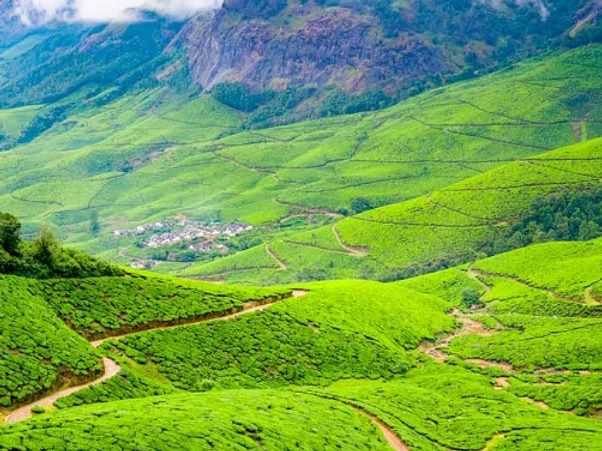
What do you think of when you think of Munnar? For most people, it’s a green paradise with tea plants growing on hills that go on forever. The air smells like fresh spices, and mist hangs around the mountains. Now is the best time to plan your getaway to “10 things to do in Munnar” to this beautiful hill station in Kerala and get away from the chaos of the city. But the real magic of Munnar is not in its famous tea gardens. There is a secret world of adventure waiting for you. Think about riding your bike down winding roads, seeing the power of ancient martial arts, or camping under a sky full of stars. To really see Munnar, you need to go to places that aren’t on the tourist trail. Our guide has everything you need, whether you’re looking for adventure, peace, or a little culture. To help you plan an unforgettable trip to the mountains, we’ve made the best list of things to do in Munnar. 1. Go on a tour of a tea estate You can’t go to Munnar without going to a tea garden, and the Kolukkumalai Tea Estate is the best one. It is the tallest tea plantation in the world, and it still makes tea the old-fashioned way. When you take a tour here, it’s like going back in time. Why You Shouldn’t Miss It: You can see the whole process of making tea, from picking the leaves by hand to packing the finished product. The ride up to the estate in the jeep is an adventure in and of itself, with bumpy roads and beautiful views. You can drink tea that is fresh and full of flavour right where it is made. Pro Tip: Go early in the morning to see the estate’s sunrise. The sight of the sun rising over the hills of Tamil Nadu is truly stunning. 2. Ride a quad bike through the hills Quad biking is a great option for people who want to have some fun. You can ride a powerful All-Terrain Vehicle (ATV) on a special track at adventure parks like Dreamland. It’s a fun and exciting way to see the beautiful spice fields and foggy mountains of Munnar. Why You Shouldn’t Miss It: It’s a fun thing to do with your friends and family. You can see the landscape in a new way while having a fun ride. It’s a great way to make your peaceful trip to Munnar more exciting. Pro Tip: Wear clothes and shoes that are comfortable and won’t mind getting a little dirty, since the tracks can get muddy, especially after it rains. 3. Go hiking in a rainforest People who love nature will love hiking through Mathikettan Shola National Park. This rainforest is a “shola,” which is a type of high-altitude forest that only grows in the Western Ghats. The hiking trail here is not too hard, so most people can do it. Why You Shouldn’t Miss It: You can see a lot of different animals, like the Malabar Giant Squirrel, Gaur (Indian bison), and even elephants sometimes. There are a lot of beautiful birds in the forest, and their chirping makes a magical sound while you hike. You can get a close look at a one-of-a-kind ecosystem. Pro Tip: Always get a local guide for your hike. They know the trails well, can point out animals you might miss, and keep you safe. 4. Watch old martial arts and dance Kerala has a lot of different kinds of art, and you can see two of the most famous ones in Munnar at places like the Kalari Kshethra. These shows are a great way to spend an evening and learn about the culture of the area. What You Can See: Kalaripayattu is an old martial art that is thought to be one of the oldest in the world. See skilled fighters use swords, shields, and spears in an exciting show. Kathakali is a traditional Indian dance that tells stories from Hindu myths. The actors wear fancy clothes and colourful makeup, and they act out the story with their faces and hands. Pro Tip: Get there about 30 minutes before the Kathakali show starts. It’s interesting to watch the artists do their complicated and colourful makeup, which is a performance in and of itself. 5. Get some rest with an Ayurvedic spa treatment Ayurveda, an ancient form of healing rooted in nature, originates from Kerala. There is nothing better than getting a traditional Ayurvedic massage after a few days of hiking and exploring. These treatments use special herbal oils and methods to make your body and mind feel new and fresh. Why You Shouldn’t Miss It: It’s a very relaxing experience that helps you feel less stressed and tired. The treatments are natural and meant to be good for your health. The peaceful experience is even better because the spa centres in Munnar are so quiet. Pro Tip: Find a spa that has a “Green Leaf” certification from the Kerala government. This makes sure that the centre meets quality standards and gives real Ayurvedic treatments. 6. Ride your bike on winding mountain roads Mountain biking is one of the best adventure activities in Munnar if you like to be active. You can rent a bike and ride through the beautiful green valleys at your own pace. Ride along the winding roads that go through tea gardens and small villages. The cool mountain air will feel great. Why You Shouldn’t Miss It: It lets you get closer to nature and see parts of Munnar that people who drive there don’t see. You can stop whenever you want to take pictures or just look at the view. It’s a great workout with a beautiful view. Pro Tip: Get a map of the route from the rental company. They can help you find trails that are right for your level of fitness, from easy rides on flat roads to harder climbs up
Cochin’s Winter Magic: A Top 10 Festive Holiday Guide
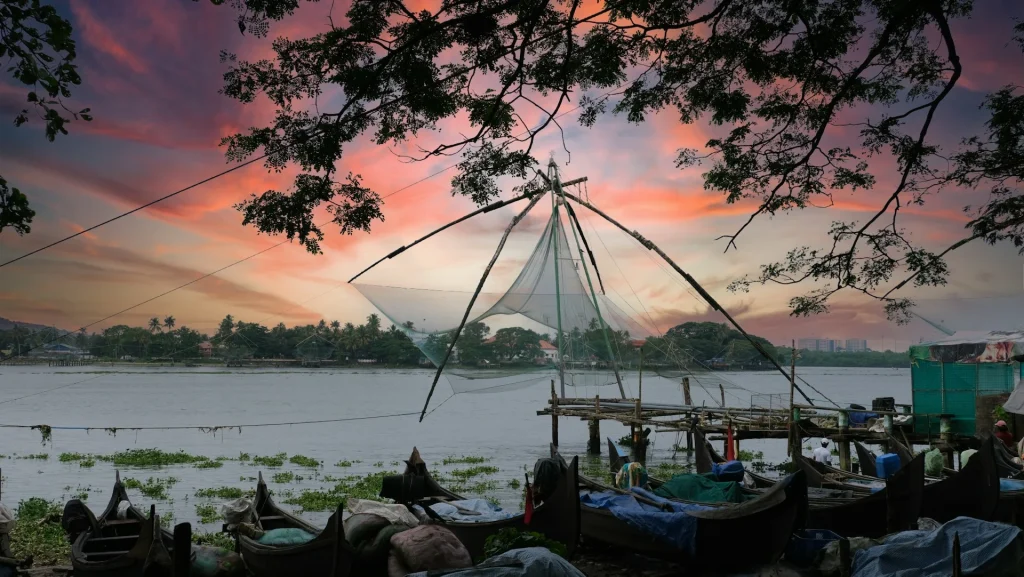
After the monsoon, cool sea breezes make Cochin wonderful. Winter on the Malabar coast of India isn’t about snow. The vibrant energy of the season is enough to fill the air. The streets have bright, twinkling Christmas stars, carolers sing delightful songs, and the churches of the old city resound with a mix of festive joy and olden traditions. Things to do in Cochin in winter. The season is perfect to explore the charm of the old city, and an ideal time for you to plan your trip to Cochin. Cochin’s winters spark a blend of traditions and cultures like no other city. The sound of carols from a church during midnight mass intertwines with the chants of pilgrims on their way to Sabarimala. The festive city lights amplify the charm of the city’s unique pre-colonial and modern architecture during the new art blend. For all the trip planners out there, there is no city in Kerala with a more delightful and varied ‘things to do’ list than Cochin in the winter. This guide outlines ten experiences that capture the charm of Cochin during the winter season, including the extraordinary Cochin Carnival and the special Christmas menu offered at some restaurants: 01. Witness the Splendor of the Cochin Carnival December in Cochin coincides with the Cochin Carnival, the most important Cochin event of the year. Carnival festivities begin the week leading up to New Year’s Day and transform Fort Kochi, with parades and celebrations that span the entire week. The entertainment includes competitions, music, and other folk art performances. What Makes It Festive: Themed parades featuring elaborate and beautiful costumes from around the world. Exciting live music, sports, and other games at the beach. The New Year is ushered in at the climax of the festivities when an effigy of ‘Pappanji” is burned at the stroke of midnight. Pro Tip: On New Year’s Eve, arrive early at the beach to get a good view of the Pappanji burning ceremony. 02. Discover the Illuminated Walkways of Fort Kochi Kochi’s winter is like a poem. Fort Kochi is the city’s gateway to history, and stepping into a winter wonderland is one of its seasonal benefits. The shoreline and coastline are lined with old buildings and Chinese fishing nets, and draw the eye with elaborate decorations for December’s holidays. The promenade is a must for the evening stroll. What Makes It Festive: Lights adorn the promenade, adding a complementary glow to the evening. Recently opened and beautifully modernized shanties and cafes offer a browsing and catering choice. Street food and seasonal snacks maintain a festive spirit all day and evening. Pro Tip: For several hours, a bike rental is a good option to discover the hidden and ornamented corridors of Fort Kochi. 03. Marvel at the Historic Santa Cruz Basilica Santa Cruz Basilica is one of the oldest and most admired churches in town. It is a fine example of Indo-European and Gothic architecture. The history of this grand creation is also tied to the Portuguese and their expansion. Every Christmas, this basilica is beautifully adorned for the holidays and draws the most visitors in town to celebrate the festive church services. What Makes It Festive: The church is beautifully dressed in lights, embroidered nativity scenes, and an abundance of Christmas trees, and Christmas is joyous and moves with an added touch of gravity with the midnight mass. Frescoes, interior murals, and further the church itself with frescoes and historical paintings are intricate and truly splendid. Pro Tip: Arrive in the late afternoons. The stained-glass windows are beautiful when they are lit with the sun, and you might be inclined to stay for calm, soothing, or serene prayers. 04. A Special Keralan Christmas Menu Unique in spice and taste, and with the signature Keralan Christmas menu, Keralas Christmas menu tastes and offers beautifully aromatic and flavours with a representative local with: Syrian Christian, Middle-Eastern, and Jewish influences. What Makes It Festive: Appam and Stew: soft rice pancakes tastefully or cashed with mildly spicy if chicken or vegetables are good in form, are steamed Pidi: Small rice dumplings Plum Cake: Christmas and Christian tradition Pro Tip: For an authentic taste, try eating at a Kudumbashree (women’s group) café or arrange a traditional Christmas meal at a local homestay. 05. Visit the Mattancherry Dutch Palace The Mattancherry Palace (or Dutch Palace) is a step back in time. Originally built by the Portuguese, it was later renovated by the Dutch. The palace features wonderful works, including murals of the Ramayana, Mahabharata, and portraits of the Cochin rulers. What Makes it Festive: The Palace offers a quiet, historical place to escape the commotion of the festivities. The winter season offers inviting weather to explore the palace surroundings. The tales of royalty and invasions add a unique edge to the holidays. Pro Tip: At the entrance, get a licensed local guide. For a very small fee, their narration about the intricately painted murals and the historical context you will get is invaluable. 06. Shop for Antiques and Souvenirs in Jew Town Jew Town is a narrow street bordered by the Mattancherry Palace and the Paradesi Synagogue. It is well known for its antique stores. This is a great place to find unique Christmas gifts and some festive decorations. What Makes It Festive: Sweet baubles, old-world figurines, and handcrafted decorations fill the shops to deck your Christmas tree. You can find various beautiful old-world metalcrafts, wooden furniture, and vintage collectibles. The nice aroma of spices and essential oils wafts through the air from the shops nearby. Pro Tip: The antiques are beautiful, but don’t forget to keep an eye out for spices, Tellicherry peppercorns, and cardamom. 07. Dine Al Fresco on Tower Road Dining at Tower Road in Fort Kochi, especially in winter evenings, is one of the best experiences in the city. Its open-air restaurants and food stalls lined along the street serve all kinds of food, from steaming hot food and fresh seafood. What Makes It
A Guide to Corporate Outings and Tours in India | 2025

With the back-to-the-office culture now a standard, you can treat your employees to a break from their usual work routine and take them out for an outing or a vacation. With the perfect balance of work and leisure, these travels will surely enhance work performance and rejuvenate people to put in a better effort in their job roles. It can also serve as an icebreaker between colleagues and enhance work relationships. Too lazy to plan your Corporate Outings and Tours? Try The Tarzan Way – it’s like having your own AI trip buddy that plans everything around your vibe. “A Guide to Corporate Outings and Tours in India” These trips are the best solution to avoid burnout from work, as they act as a getaway from their usual office environments and enjoy work as well as unwind from the stress. Here is a list of things you can do, places you can visit, and stay during an outing or trip with your team and colleagues: Kashmir Manali Nainital Darjeeling Jaisalmer Goa Alleppey Wayanad Andamans 1. Kashmir Credit: BBC Kashmir is uncontested when it comes to its beauty and offerings. It is one of the most exotic destinations in India and rightly so, as its landscapes are so pristine, its valleys extremely captivating, lofty mountain ranges, and enticing lakes and rivers that traverse across the valley. It is also a haven for adventure seekers and nature enthusiasts, as the various towns of Kashmir are brimming with activities and beautiful sights. A corporate trip to this “heaven on earth” will surely enlighten the stressed bodies and souls of the employees. Things to do: Take your team for a trek among the famous and beautiful trekking trails of the Kolahoi Glacier at Sonamarg. Rent boats and take a moment to enjoy the beauty of Dal Lake and shop on the floating markets on the lake while at it. Places to visit: Gulmarg, Pahalgam, and Sonamarg Best time to visit: May to October Where to Stay: Radisson Srinagar, The Heritage Group of Houseboats. 2. Manali Credit: Vishal Bhutani An enchanting hill station tucked amid the Himalayan ranges, Manali is one of the most exciting destinations for a corporate trip. Manali will cater to people who love to spend time in the confines of quaint surroundings and also those who thrive off adventures. It has something to offer to people of any kind and personality. The beautiful streams, rivers, and hills covered in pine trees and orchards will serve as a getaway experience for tired office workers. Things to do: Pay a visit to the hot water springs of Vashisht. Relax and detoxify with your colleagues amid the sounds of the forest. Try river rafting with your team at Tattapani and the Beas River. Go paragliding and witness the beauty of Manali and the Kullu Valley from above. Places to visit: Solang Valley, Rohtang Pass, Naggar Castle Best time to visit: March to July Where to Stay: Echor Himalayan Aurum Manali, The Orchards Green Resorts and Spa. 3. Nainital Credit: Nainital Corbett Tourism A perfect hill station to escape the scorching summer heat and one of India’s most loved getaway destinations is Nainital. Nestled in the lap of the Kumaon Hills, Nainital makes a great choice for a corporate trip. The town is surrounded by exquisite mountain ranges, pine forests, and stunning lakes that are a treat to the eyes and soul. It will no doubt please people from the cities looking for an escape to the hills for a vacation. Things To Do: Take a safari ride with your colleagues at Jim Corbett National Park and witness the varied wildlife bounty. Enjoy a day out trying out activities offered at Devbhoomi Outdoor Adventure Park. Try the ropeway ride at the Corbett waterfalls. Places To Visit: Nainital Zoo, Tiffin Top, Naina Peak Best Time To Visit: March to June Where To Stay: The Kumaon Retreat, Orchid Nainital 4. Darjeeling Credit: Arvind Telkar A relaxing hill station where time slows down due to the unhurried pace of life, Darjeeling is a soulful destination to rejuvenate the tired mind and body. With spectacular sunrises and sunsets, views of the snow-capped Himalayan ranges, iconic movie locations, and charming tea gardens, anyone walking the streets of Darjeeling will reawaken to the beauty of life and nature. Things To Do: Wake up early and head out with the whole team to witness the Sunrise at Tiger Falls. Visit the beautiful tea gardens, take group pictures, and unwind amid the beautiful landscapes. Shop at the local markets for tea leaves, Pashmina shawls, and churpi, a local, hardened cheese. Places To Visit: Himalayan Mountaineering Institute, PNZ Zoological Park, Ghoom Monastery Best Time To Visit: April to June Where To Stay: Istana Resorts and Spa, The Elgin 5. Jaisalmer Credit: National Geographic The vibrant city of Jaisalmer, famous for its traditions and cultural heritage, is indeed one of the most exciting places to visit in India. Jaisalmer is also home to a lot of royal heritages that are evident from its architectural constructions of forts, havelis, and castles. The rustic dunes, royal palaces, bright-lit temples, and bazaars will serve as the perfect places for outings and sightseeing with colleagues. Things To Do: Go parasailing at Kanoi and enjoy the thrill and excitement of this activity. Explore the dunes with Quad bikes at Sam Sand Dunes with your team for an unforgettable experience. Explore the various enticing bazaars and shop for your loved ones. Places To Visit: Gadisar Lake, Jaisalmer Fort, Desert National Park, Patwon ki Haveli. Best Time To Visit: November to March Where To Stay: Pansari Palace, The Desert Palace 6. Goa Credit: Sumit Sourav via Unsplash Goa, the most iconic beach destination in India, is also one of the best places to enjoy a trip with your work colleagues. The sounds of waves hitting the shore, sunlight beaming on your face with a light breeze in the air, and clear skies all culminate to make Goa a desired destination to work and
Plan the Perfect Corporate Outing: A 10-Step Guide (2025)

The corporate world isn’t the most exciting place, given the workloads and deadlines that are always looming over the heads of employees. “Plan the Perfect Corporate Outing” With constant pressure to perform better, working hard to get the best results, and sometimes overworking due to an intense workload, the life of a corporate employee can be hard. With so much on their plate, these tight schedules may even hamper the bond of teammates. “Too lazy to plan your Plan the Perfect Corporate Outing? Try The Tarzan Way – it’s like having your own AI trip buddy that plans everything around your vibe. Plan the Perfect Corporate Outing: A 10-Step Guide.” However, team excursions are a proficient way to expedite bonding with team members and other colleagues, reduce work stress, and offer them the chance to get to know one another outside of the office. It is also a great way to boost teamwork, improve employee engagement, and serve as a refreshing break from the work environment. These team-building events are proven to be effective in creating a better work environment, eventually an increase in productivity and hence the revenue of the companies. Photo Credit: Dreamstime.com 10 Simple Steps to a Perfect Corporate Outing Here is a list of things to consider before planning a corporate event or outing: 01. Choose the right Planning Team Involving the right people in the right task always gives the best results. These company outings and team-building events are crucial to keep up the spirits of employees and prevent burnout. However, it isn’t an easy feat to accomplish when planning a team outing, given the varied types of people and preferences. Gather a group of people and delegate tasks and responsibilities so that everything can be carried out smoothly and on time. Also, having the right set of people who are meticulous and detail-oriented in their vision and execution is required to create hype around these company events. 02. Plan in Advance The best way to ensure that your corporate outings are effective and of value to the employees is to make sure that all necessary planning and precautions are taken in advance. It can take up to a month or more to meet all the prerequisite criteria of the people and the event. Always make sure that the planning team is well ahead in devising their plan and action in advance. Create a timeline with a proper schedule and follow the calendar to get the best out of these team-building events. 03. Set Clear Goals While planning a corporate outing, it is indispensable to have an objective you are looking to achieve. Given the nature of corporate retreats or outings, these corporate events always come at a price. So, it is pertinent to make the best use of these events to promote team bonding through bonding activities and team-building activities. Another important aspect is the employees you are targeting, the kind of team-building activities you are looking forward to, and the reason you are holding these team events. Be precise and oriented with these points. 04. The Budget It is detrimental to be very clear on the budget that is or will be allocated for the outing to make sure that all the other avenue of planning is done effectively. Set a list of priorities and spending, and plan accordingly. Ask your boss or the coordinator to give you a number for the budget. It is always good to set a flexible budget for team building activities that will actually be of interest to the employees to derive the maximum benefit out of the trip. 05. The Date Fix a date that will work for everyone in the office or team to boost participation from the employees. Before you venture into an event that is specifically targeted to enhance team building for work, it is always advisable to fix a schedule around the free and convenient time of the participants. This was both the inclusivity factor and the participatory spirit that will be amplified. 06. Secure the Venue One of the most crucial aspects of making a corporate outing successful is the selection of the location or destination. Choosing the right venue will intrigue and spark anticipation for the team event. This may also boost the morale and productivity of the potential participants. Make sure to secure the necessary permit or bookings since these outings involve a large group of people. 07. Choose the right Team-building Activities Planning an event that involves people who spend hours in front of their screens or long hours of meetings will require effort on the part of the organizers to charge them up for various strenuous activities. It is always ideal to involve both indoor and outdoor team-building games and keep it abuzz with other good team-building activities to create a friendly environment, which in turn promotes bonding and good work relationships in the future. 08. Advertise the event internally Always make it a point to highlight these outings to build an anticipatory air around the event. This will also create eagerness and excitement among employees. Market the event within the teams to look forward to among colleagues, which may also foster to creation of conversations and great work relationships in return. 09. Hire an Expert Travel Guide Take the help of outside organisations or agencies that specialize in curating these off-site team-building activities. This will help you cut costs and time. Hire a coordinator or facilitator who has a good working knowledge of the venue or site and let them plan the outline of your day-to-day activities, flight, and hotel bookings. This will ensure that all required access and permissions are secured and your retreats and outings function smoothly. 10. Have a Good Time As stressful as the idea of gathering a large group of people or teams to come together for a team-building event, it is also important that everyone present, regardless of role and position, feels included as a part of the event. So with all
Perfect 7-Day Goa Itinerary Blissful North & South (2025)
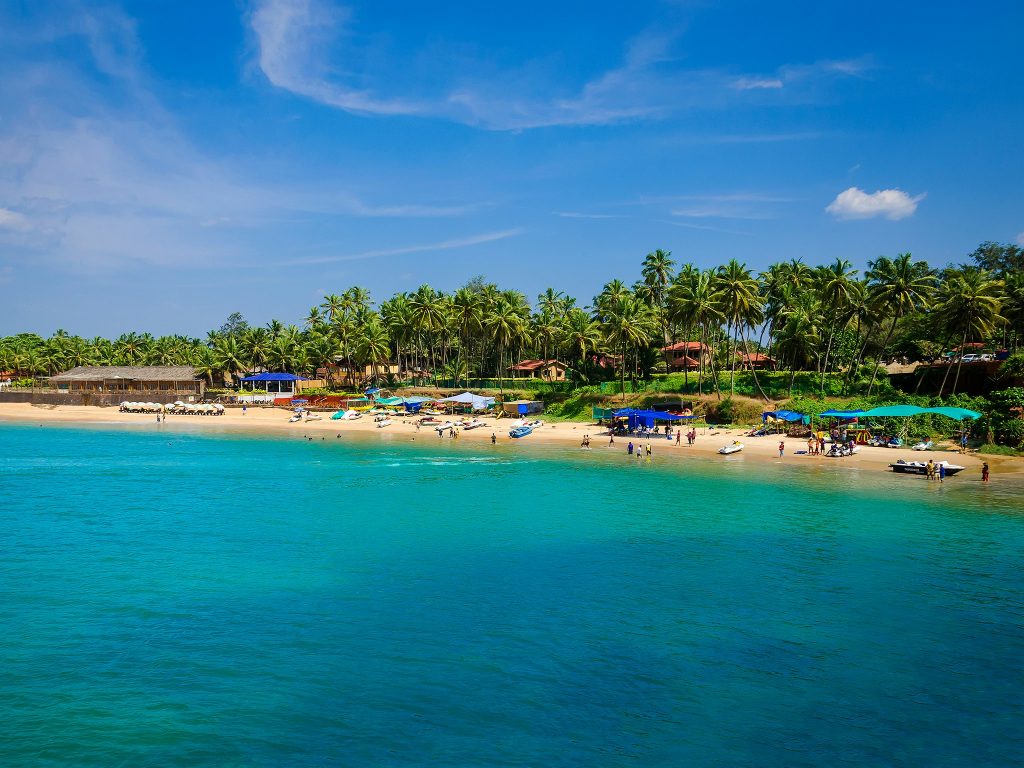
Goa is justly famous for its beaches, but this former Portuguese colony is characterized by much more. It is also home to some of the most stunning waterfalls in India, Indo-Portuguese architecture, ancient temples, and a delightful multicultural heritage. Goa is also the only part of India with a significant European influence, a portion of Konkan soul, and a unique, rich, cultural tapestry. “The Perfect 7-Day Goa Itinerary” For first time Goa visitors differentiating between the party atmosphere of North Goa and the calm, lush, and lovely landscapes of South Goa can be a challenge. Why not get the best of both? Too lazy to plan your Goa trip? Try The Tarzan Way – it’s like having your own AI trip buddy that plans everything around your vibe. Their 7-day Goa plan is the perfect mix of chill beaches + cultural feels. This Goa week-long trip is intended to be a pack itinerary to sample the active culture of the region. The 7-day Goa itinerary is designed to be a time balance between relaxation pants and culture boots. For Day 1, Discover the Buzzing Beaches of North Goa On the first day in Goa, you should visit the beautiful beaches. The North Goa beaches are filled with activity. You may spend the holiday in the busy, tourist-loved beaches such as Vagator or Baga. If you want to relax, you can spend the holiday at Morjim beach. You can spend the day at the beach and enjoy swimming, sunbathing and water sports such as parasailing or banana rides. Pro Tip: You should get a scooter. You can visit Calangute, Baga, Anjuna and other North Goa beaches with your scooter. It is the most popular method of transport. Day 2: Check Out the Unique Attractions in Panjim The capital of Goa is Panjim or Panaji and the heart of the state. It offers a perfect blend of culture, shopping, and history. Spend the morning in the Fontainhas Latin Quarter and then visit the narrow streets and enjoy the beautiful, colorful Portuguese houses. In the evening, the tourists can enjoy the street market filled with local and unique merchandise, live music andstreet performances. Be sure not to overlook the various street food vendors situated in Panjim. To gain a true understanding of the area, you should sample some of the local Goan treats, particularly the chorizo pav and the fish cutlets. Day 3: Discover Goa’s Historical Landmarks Leave the third day for the history of Goa. Go to Old Goa (Velha Goa), a location that is a UNESCO World Heritage site and used to be the capital of the Portuguese Indies, and the most magnificent Old Goa. Go to the awe inspiring Basilica of Bom Jesus, where the mortal remains of St. Francis Xavier rest, and to the imposing Sé Cathedral. Then, in the afternoon, you go back in the direction of Panjim in order to see historic forts, either Reis Magos or Fort Aguada, to appreciate their history and spectacular views of the sea. Pro Tip: In Old Goa, you should hire a licensed guide. The history of the monumental churches and colonial buildings is enhanced for a reasonable price by their narratives and knowledge. Day 4: Southern Voyage to Relax and Camp at Cola Beach Leaving behind the South’s bustle, Cola Beach is in the South Goa region. South Goa is cleaner, more fully, and more peaceful. Head to Cola Beach, for it is one of the understated marvels of Goa, famous for its lagoon. For the rest of the day, bask in the glory of nature, and at night, experience the wonder that is camping on the beach. Relax, the locals have improvised huts as well as deluxe tents for you to choose from. Pro Tip: Cola Beach. Camp on the beach. Relax, the locals have improvised huts as well as deluxe tents for you to choose from. Day 5: Gaze at the Horizon from Cabo De Rama Fort The route to Cabo De Rama is one of the oldest in Goa, and the most dramatic. It sits on a cliff above the beach, at the middle of Agonda and Cavelossim. It has one of the best views of the Arabian Sea. It is said that Lord Rama and Sita spent some of their exile in the fort, making it a rewarding route to the excellent views and rich history. Pro Tip: Make sure you wear proper shoes as you explore the rocky paths in the fort. There isn’t much in the way of shops, so bring your own water and snacks. Day 6: Scavenge the Streets of Palolem If you find the solitude of the South a little too much, you can head to Palolem beach. It is much livelier, and one of the most beautiful beaches in the South. It is well known for its crescent shape, and calm waters. The beach is lined with shops that sell clothes, souvenirs, and trinkets. It is a great place to practice your bargaining skills. Pro Tip: If you are looking for a unique Goa’s nightlife, you can check for a Silent Noise party at Palolem, or the nearby Patnem beach. You are given wireless headsets and can choose different DJs to listen to, making for a surreal party experience. Day 7: The Final Day of Leisure Your final day is to be spent doing anything you wish, be it revisiting your favorite beach, attending a Goan cooking class, getting an Ayurvedic massage, or simply hanging out at a beach shack with a book and a drink, enjoying all the final moments of your Goan paradise before heading to the airport. Pro Tip: For an authentic Goan meal, you may want to finish your trip at a local restaurant and enjoy some fish curry and rice or prawn vindaloo. Still Have Some Doubts in Your Mind “FAQs”: Q. What are the things to do if I have 1 day in Goa? A: Hit the buzzing beaches of North Goa —



